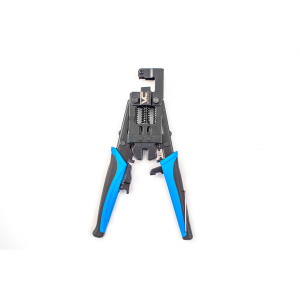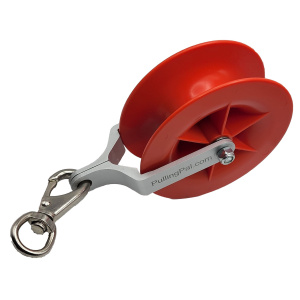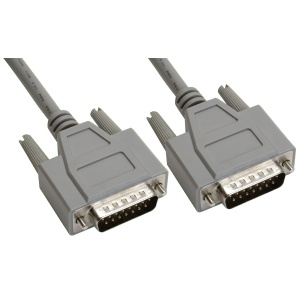Introduction: Electrical Connectors, Their Importance, and Choosing the Right One
Our world operates on electricity, powering up everything from the smartphone in your pocket to the jumbo jet soaring across the sky. When it comes to handling this powerful force, knowing your gear can make a world of difference. So let’s dive into the nitty-gritty of two often-used electrical terminals: spade and ring. Ever wondered, “What is the Difference Between Spade and Ring Terminals?” Well, buckle up, because we’re about to unravel this mystery!
Spade and Ring Terminals: An Overview
Before we jump into the differences, let’s understand what spade and ring terminals are. Terminals are an integral part of any electrical wiring system, serving as connection points where wires meet devices. They come in many shapes and sizes, and among these, spade and ring terminals have their unique uses.
A spade terminal is a fork-shaped connector, akin to a miniature garden spade, hence the name. Its open design allows easy disconnection and reconnection, proving handy in setups that require regular maintenance or inspection.
Conversely, a ring terminal features a circular design, providing a secure, solid connection. Their closed loop offers excellent pull-out strength, making them a go-to for more permanent connections.
Hitting the Nail on the Head: What is the Difference Between Spade and Ring Terminals?
There are numerous factors at play when you ask, “What is the Difference Between Spade and Ring Terminals?” Below, we’ll investigate some of these key distinguishing features.
The Mechanics of Connection
One fundamental difference lies in their approach to connectivity. Spade terminals, with their open-ended design, provide easy detachment. This is a boon for technicians performing regular checks, as they can quickly disconnect and reconnect the wiring without removing the entire bolt or screw.
On the other hand, ring terminals, with their closed-loop design, provide a more secure connection. They’re often chosen for applications where the connection should not be easily tampered with or where there’s a high possibility of pull-out forces.
Environmental Resilience
The design differences between spade and ring terminals also influence their environmental resilience. Ring terminals, being securely bolted down, offer superior resistance against vibration and pull-out forces, making them ideal for high-stress environments.
In contrast, spade terminals, due to their easier disconnect capability, may not stand up to intense vibrations or tension as well as ring terminals do. This makes them better suited to calmer environments or settings where the terminals are not under constant stress.
Picking the Right Terminal: Spade vs. Ring
Choosing between a spade and a ring terminal is no easy task. The key is understanding their strengths and weaknesses, and matching these with the needs of your project.
Project Requirements and Terminal Suitability
Every project has its unique requirements. If the project involves a connection that may need frequent disconnection for maintenance or troubleshooting, a spade terminal might be your best bet.
On the flip side, if the project requires a connection that should withstand vibrations or tension, or must stay connected securely, a ring terminal would be a better choice.
Terminal Sizes and Wire Gauge
The size of the terminal and wire gauge are also vital considerations. Both spade and ring terminals come in various sizes, designed to work with different wire gauges. It’s essential to select the right size and type for the wire you’re working with.
Insight into Spade and Ring Terminal Applications
To further appreciate the differences between spade and ring terminals, let’s look at their typical applications.
Where Spade Terminals Shine
Spade terminals are commonly found in environments requiring frequent wire disconnection. They’re popular in consumer electronics, automotive applications, and even household appliances.
Ring Terminal Realm
Ring terminals, given their sturdy design, are often used in more permanent, heavy-duty applications. They’re extensively used in industrial machinery, construction equipment, and automotive grounding applications, to name a few.
FAQs
1. What is the Difference Between Spade and Ring Terminals?
The main difference lies in their design and, consequently, their applications. Spade terminals have an open-ended design ideal for connections requiring frequent disconnection and reconnection, while ring terminals have a closed-loop design that provides a more secure, permanent connection.
2. Are Spade Terminals Better Than Ring Terminals?
Neither is inherently better; it depends on the application. Spade terminals are better suited for settings requiring frequent disconnections, while ring terminals are ideal for more permanent, secure connections.
3. Can I Use Spade Terminals and Ring Terminals Interchangeably?
While they serve similar functions, they’re not always interchangeable due to their design differences. The choice between spade and ring terminals depends on your project requirements.
4. What are Some Common Applications of Spade and Ring Terminals?
Spade terminals are commonly used in consumer electronics, automotive applications, and household appliances. Ring terminals are typically used in industrial machinery, construction equipment, and automotive grounding applications.
5. Are There Different Sizes of Spade and Ring Terminals?
Yes, both spade and ring terminals come in various sizes to suit different wire gauges.
6. Which Terminal is More Resistant to Vibration?
Ring terminals, due to their closed-loop design, offer better resistance to vibrations compared to spade terminals.
Conclusion: Understanding Makes Perfect Connections
When we started, you asked, “What is the Difference Between Spade and Ring Terminals?“. Hopefully, now you’re brimming with answers! Knowing the difference and choosing the correct terminal can significantly enhance the performance and safety of your electrical connections. So the next time you’re faced with a DIY project or an industrial installation, remember – the devil’s in the details!












